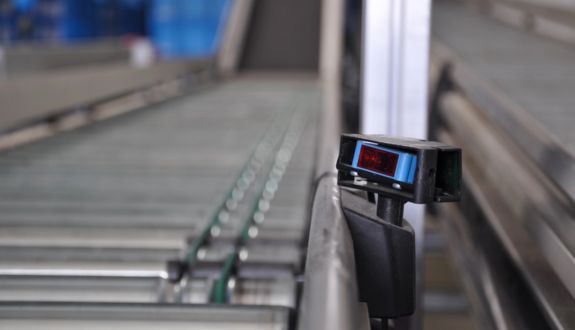Instead of using manual labor to check if all items in a tote or carton are accurate, a weigh-in-motion solution can detect virtually every error in picking without the need for manual labor. Shipping weigh-in-motion is an automated process used to verify the contents of a carton or container before goods are sent to shipping. Each customer order has a weight associated with it, and that weight is based on the items in the order. A conveyor system, or Autonomous Mobile Robot (AMR) solution delivers a tote or carton to the weigh-in-motion solution where the container passes over a scale on the conveyance system or placed onto the scale when using AMRs. The scale is triggered, and the carton’s weight is captured.
This weight is then compared to the weight that has been calculated by the warehouse control system (WCS). If the weight in the WCS is within tolerance of the weight measured by the scale, the carton is sent to shipping. If the two weights are not within tolerance, the carton is conveyed to an area where it’s triaged for further evaluation. Even though mis-shipments are extremely rare in today’s automated fulfillment environments, it is important to include shipping weigh-in-motion as a quality check.
A weigh-in-motion solution is a computerized device; it is a weigh scale that has the ability to communicate with a warehouse control system (WCS). The weigh-in-motion and the WCS must be integrated and work synchronously in real-time so that once a carton is weighed, a decision can be made about what to do next.
If the weight calculated in the WCS is within tolerance of the weight measured by the scale, the carton is allowed to convey toward shipping. If the two weights are not within tolerance, the WCS communicates this information to the conveyor controls in real time so that the carton is conveyed to an area where it’s triaged for further evaluation.
Note: Shipping weigh-in-motion is beyond the scope of ERP; however, it can be integrated with a warehouse management system (WMS), provided the WMS is able to manage real-time communications. Because weigh-in-motion cartons move across the scale at a high rate of speed, they need an immediate response. If they don’t get one, the entire conveyor line shuts down at that point and waits for that communication.

Best-in-class weigh-in-motion can process a carton every few seconds. Processing speeds depend on the type of conveyor, how fast the conveyor runs, and the volume of cartons being processed. In high volume fulfillment facilities, cartons are stacked virtually back-to-back on high speed conveyors, and the shipping weigh-in-motion process must occur very quickly.
What to look for in a shipping weigh-in-motion software vendor
For optimal weigh-in-motion, choose a vendor that offers a warehouse control system (WCS) and actually has experience implementing it for shipping weigh-in-motion. Do not try to achieve weigh-in-motion through an ERP system. Generally speaking, an enterprise resource planning (ERP) system cannot offer the real-time responsiveness needed for the high throughput devices needed for weigh-in-motion. Most warehouse management systems (WMS) are not built to deliver this level of real-time responsiveness either. What’s needed is a WCS that can integrate with a variety of different software systems (ERP, WMS, e.g.) and equipment (conveyors, weigh-in-motion scales, e.g.) and be in real-time communication with them.
